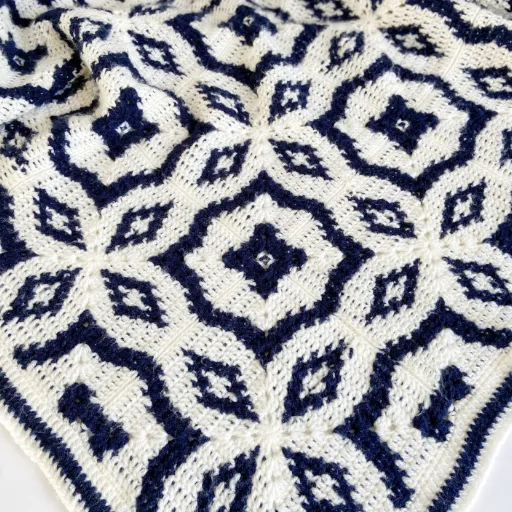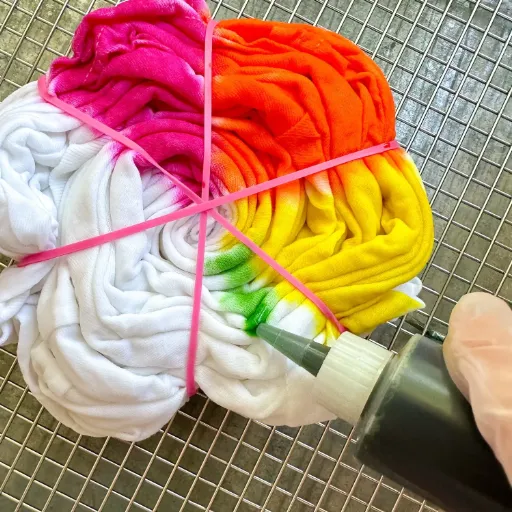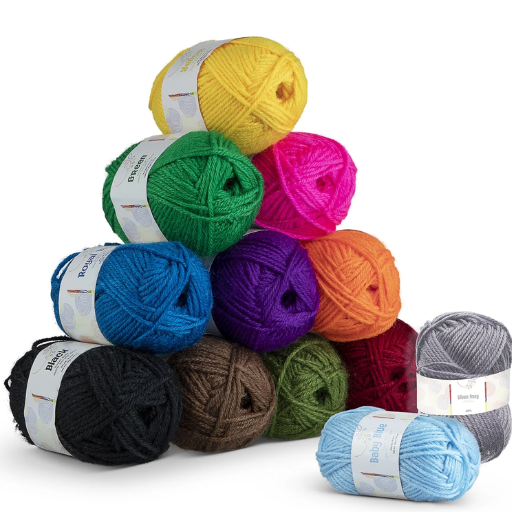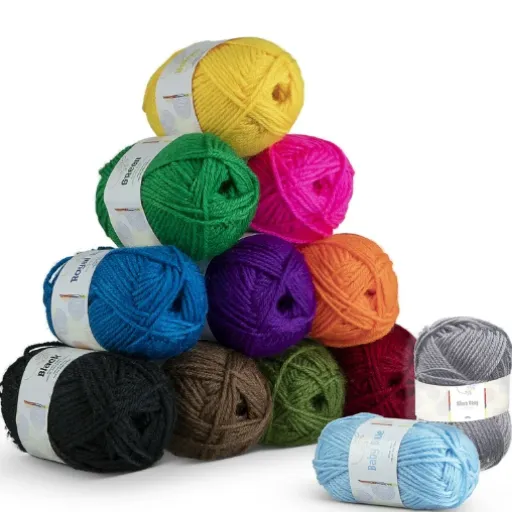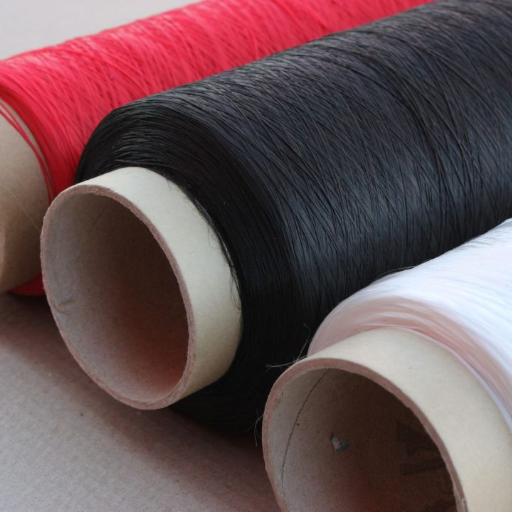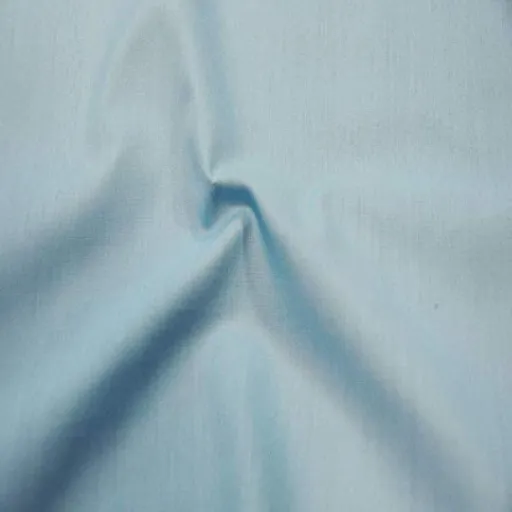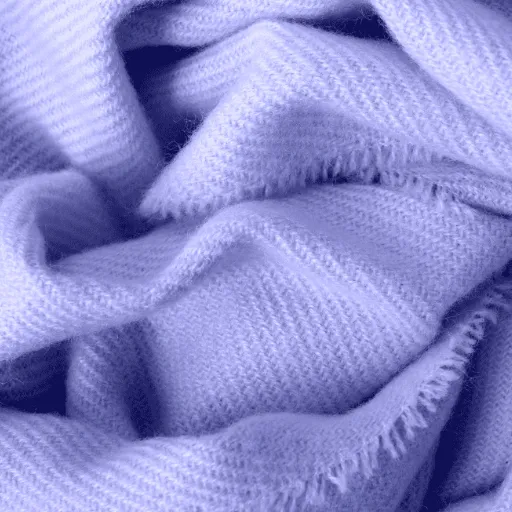Polyester has become a defining material in modern textiles, shaping industries and wardrobes alike with its incredible adaptability and performance. From the clothes we wear to the furniture we use, this synthetic fiber bridges the gap between style, functionality, and sustainability in exciting ways. But what makes polyester so versatile, and why has it remained a staple in textile innovation for decades? This blog post delves into the origins, benefits, and evolving applications of polyester, examining how it has revolutionized not only fashion but also numerous other industries. Whether you’re a designer, an environmentally conscious consumer, or simply curious about the fabrics that shape our world, read on to discover the untold story of this groundbreaking material.
Applications of Polyester Across Industries
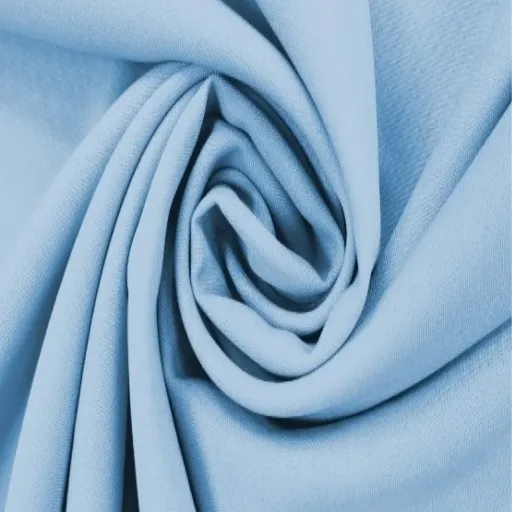
Polyester is one of the most popular materials because of its durability, versatility, and affordability. Its uses range widely across different fields, including:
- Fashion and Apparel: Polyester is commonly used in clothing because of its wrinkle resistance, quick-drying properties, and ability to blend with other fibers for enhanced performance.
- Home Furnishings: From curtains and upholstery to bed linens and carpets, polyester is a preferred choice for its strength, stain resistance, and long-lasting quality.
- Industrial Use: Polyester is integral to the production of ropes, conveyor belts, and safety harnesses due to its robustness and durability.
- Packaging: Polyethylene terephthalate (PET), a type of polyester, is widely used in the manufacturing of bottles, food containers, and other packaging materials.
- Automotive Industry: Seatbelts, tire reinforcements, and interior upholstery often incorporate polyester for its exceptional strength and wear resistance.
- Technology: Polyester films are used in electrical insulation and components due to their excellent thermal and chemical stability.
Fashion and Apparel: Lightweight and Durable Fabrics
Polyester has been the leading fabric choice for the fashion and garment industries due to its lightweight, durable, and easy-to-care-for nature. Improved technologies have since made polyester fabrics more breathable and versatile, allowing designers to mix them with other textiles, such as cotton or spandex, to enhance softness and flexibility. This set of choices addresses a demand of end consumers for comfortable, durable clothing that fits in the everyday wear/lifestyle/activity category. Additionally, recycled polyester is gaining more attention nowadays, reflecting an increased environmental consciousness within the sector. By blending functionality with ecological concerns, polyester continues to drive innovation in fashion and fabric technology.
Home Textiles: Upholstery and Furnishing
From upholstery to furnishing fabrics, these are the elements that characterize the beauty and comfort of interiors. Among other go-to fibers, polyester has gained popularity in this field due to its durability, stain resistance, and ease of maintenance. Polyester provides the functions natural fibers have, only much better, so sofas, curtains, and decorative throws should all be served by the fabric choice. Recently, trends seem to be tilting towards polyester blends with natural fibers considered for refinement; options for eco-friendly living are also favoring such blends. Modern textile technology, combined with enduring design, puts polyester on a new playing field of home décor possibilities, where solutions are both practical and stylish.
Environmental Considerations: The Impact of Polyester
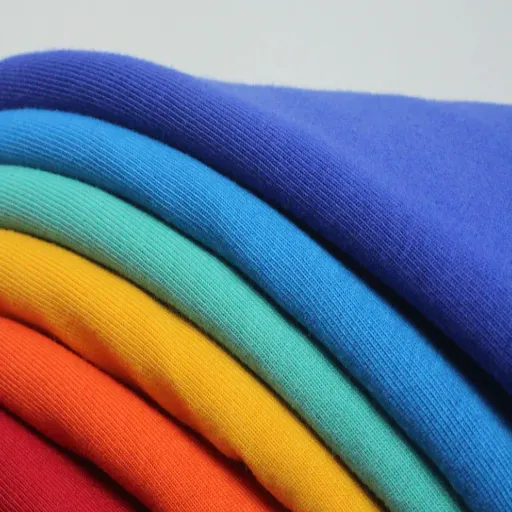
The most undesired environmental impact associated with production arises from the dependence on non-renewable petrochemical resources. Its production requires a large amount of energy, and it emits water pollution and greenhouse gases. Microplastics are shed into water systems during the washing of polyester fabrics, in some cases harming marine ecosystems. Despite these drawbacks, efforts to reduce its ecological footprint have been initiated, including the recycling of polyester materials and the development of alternative, more environmentally friendly production methods.
Environmental Footprint of Polyester Production
The continued production of polyester poses significant environmental challenges, but solutions are emerging to mitigate its impact. The latest data suggest that over 65 million tons of polyester are being produced annually, making it the most used synthetic fiber. The dependence on non-renewable resources coupled with energy-intensive manufacturing processes raises concerns, especially since polyester accounts for approximately 1.5% of global greenhouse gas emissions. On the other hand, newer methods to combat this issue are being developed, such as bio-based polyesters and the recycling of used textiles for a circular fashion approach. Recycling alternatives are vast; one can recycle waste plastic bottles into polyester fiber, thereby reducing waste and competing with the extraction of virgin materials. Do public awareness and regulations work together to spearhead these changes? If so, they will eventually force polyester manufacturers to adopt cleaner and more sustainable production methods.
Challenges of Recycling Polyester
While recycling polyester is necessary to lessen environmental impact, it faces numerous hurdles. Contamination of materials is a hindrance factor, as polyester is frequently blended with other fibers, thereby complicating the separation and recycling process. The price of recycled polyester also decreases over time; after all, repeated recycling causes the breakdown of fibers, thereby reducing their reuse. Additionally, the very aggressive energy consumption for recycling, combined with chemical pollution, partially cancels out the environmental benefits. New reports have suggested the figure to be less than 15; the upside is that a very low percentage of the total polyester is being recycled, now stressing the need for urgent research into technological and infrastructural advancements to enhance the recycling rates. Improved systems for sorting textile waste, along with innovations for fiber recovery, can thoroughly solve these persistent problems.
Innovations in Sustainable Polyester Technology
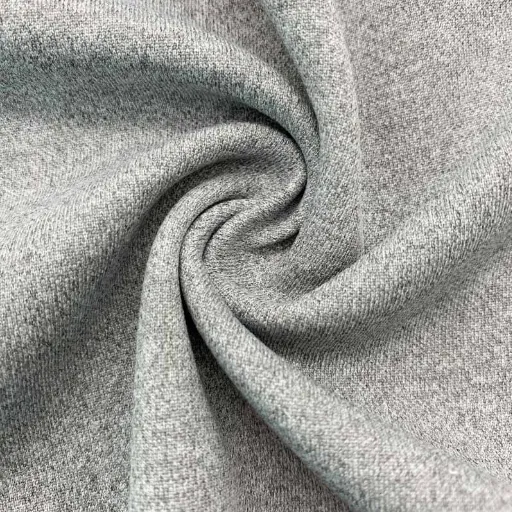
The latest innovations in sustainable polyester technology focus on minimizing environmental impacts while maintaining high-quality materials. Major development works are related to the manufacturing of biopolymers from renewable substances, such as plant-based feedstocks, which are used as substitutes for petroleum-based materials. Furthermore, chemical recycling techniques can now break down polyester into its basic constituent, allowing the fibers to be refabricated into high-quality products from post-consumer textile waste. Mechanical recycling technologies have also improved; good techniques are now available for producing recycled polyester without compromising its durability properties. These very developments, serving as the backbone, must work in synergy with improved waste collection and sorting machinery to increase global polyester recycling rates and significantly reduce textile waste.
Growth of the Recycled Polyester Market
In recent times, the recycled polyester industry has experienced substantial growth due to consumers’ increasing demand for sustainable products and rising environmental awareness. Recent data suggest that the worldwide recycled polyester market is expected to experience a significant compound annual growth rate (CAGR) over the next 10 years, with opportunities for improvement arising from advancements in recycling technology, regulations promoting the circular economy, and businesses adopting greener approaches in their manufacturing processes.
More industries, such as fashion, automotive, and home furnishings, are increasingly incorporating recycled polyester to achieve their sustainability goals, thereby contributing to market demand. In response to consumer preferences, companies have been introducing various products made from recycled materials, thereby strengthening the position of recycled polyester in alleviating plastic waste and moving towards betterment in the future.
Circular Economy Initiatives for Sustainable Polyester
Circular economy developments for sustainable polyester production focus on reducing waste, reusing materials, and recycling them to maximize efficiency within a closed-loop system. These initiatives focus on making products easier to recycle, developing take-back schemes, and advancing recycling technologies to enhance the overall recycling process. For example, chemical recycling, via methods such as depolymerization, breaks down polyester into monomers from which high-quality new fibers can be generated. Likewise, major brands have partnered with recycling organizations and adopted certification programs to introduce traceability and accountability to their supply chains. Alongside rising consumer awareness, these upgrades are driving significant efforts to reduce environmental impacts and pave the way for a new textile industry.
Consumer Tips: Purchasing and Caring for Polyester Products
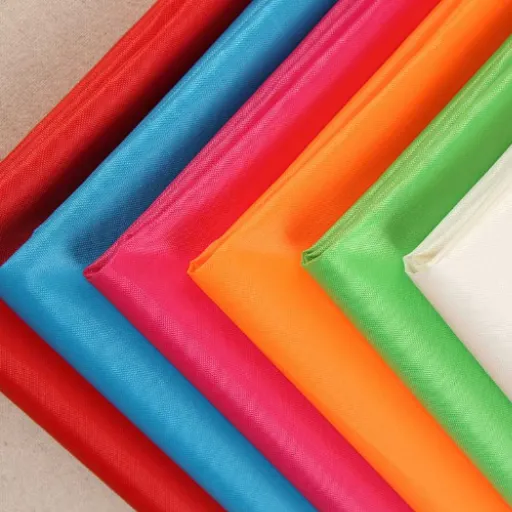
- Choose Recycled Polyester: To support sustainability, opt for items made from recycled polyester. Additionally, look for certification, such as the GRS (Global Recycled Standard), to verify this claim.
- Check Durability: Opt for high-quality polyester products designed for extended use to minimize short-term and medium-term disposal. Durable products are not prone to rapid wear and do not require frequent replacement.
- Wash Responsibly: Wash polyester in cold water to conserve energy and prevent damage to the fibers. Use a laundry bag to trap microfibers and prevent them from entering waterways.
- Air Dry: When motivation achieves this, air-drying polyester products saves energy and benefits the life span. High heat should be avoided, as it deteriorates the fibers more quickly in the long run.
- Repair and Reuse: Eliminate waste by mending both small tears and imperfections on damaged articles. Saving themselves through another stretch of their own ways of life is a waste and resource-prohibitive.
Identifying High-Quality Polyester Products
There are certain key things by which high-quality polyester can be judged. A loose weave or knit is often indicative of less durability and more wear, so always opt for those with a tight and regular weave or knit. A surface that looks and feels smooth and uniform is preferred, free of glitches such as loose threads or irregularities. Some environmentally friendly options are those labeled as recycled polyester or R-PET, which are currently of great interest in sustainable development. Additionally, premium polyester can be blended with other fibers to enhance the feel, breathability, or stretch. Further confirmation from trusted sources that have certified the product for quality environmental standards, such as Oeko-Tex and GRS (Global Recycled Standard), would be helpful. Always check the care instructions to ensure you know how to maintain your foundation properly. Top-of-the-line polyester tends to improve with good care.
Best Practices for Maintaining Polyester Fabrics
Never ignoring the care label instructions, I always maintain polyester textiles accordingly. The washing process consists of either cold or warm water, with a gentle detergent, as high heat can damage the fabric. For stains, the timely application of a mild stain remover is essential. Avoiding static cling is sometimes achieved by using a fabric softener or dryer sheets on polyester textiles. With proper care, polyester fabrics largely retain their super condition for a long while due to their durability.
Future Trends in Polyester: What Lies Ahead?
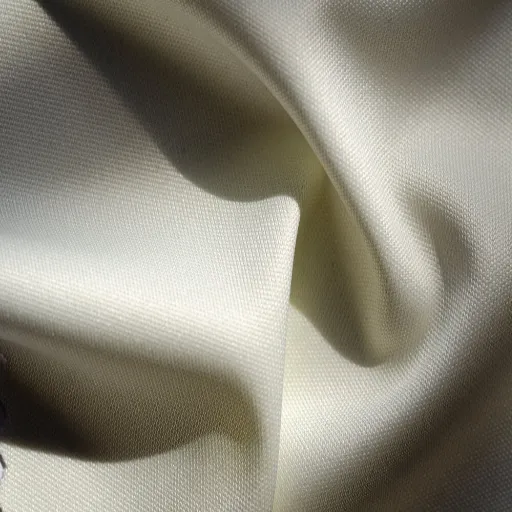
Polyester sustainability and innovations are at the forefront. New recycling technologies aim to increase environmental awareness by utilizing polyester in post-consumer waste for the production of high-grade fibers. They present an alternative in the case of biodegradable polyester, thereby addressing the issue of microplastics and environmental hazards for the next few decades. There are also firms looking for ways to minimize the energy-water consumption profile under manufacturing conditions. Currently, with these eco-friendly materials being highly sought after, polyester is undergoing a facelift toward a more environmentally conscious and sustainable approach.
Predicted Market Growth and Emerging Applications
Predicted to grow at a significant pace over the coming years, the establishment of demand from various areas of application, including apparel, automotive, and home furnishings, will facilitate growth in the polyester market. According to reports, the global polyester market is expected to grow at a CAGR of around 4-5% in the coming years. These factors include improvements in polyester production methods with sustainability intent, an increase in the use of blended fabrics, and the use of acetate glasses to inform consumers about the importance of eco-friendly fibers.
On the other hand, innovative applications of polyester in sports, medical textiles, and packaging are expanding. Polyester remains a versatile fiber grade even when introduced to technological advancements, such as moisture-wicking fabrics and recyclable materials. Another opportunity with considerable promise lies in smart textiles, where technology is seamlessly integrated with functionality. This vast market potential propels polyester into a pivotal position in the modern textile industry, enabling it to adapt to consumer needs and address environmental concerns.
Integration of AI in Polyester Production
The implementation of Artificial Intelligence has significantly altered the textile industry’s efficiency and innovation. AI-assisted tools enable producers to further optimize their processes through predictive maintenance and real-time monitoring of their machinery, thereby ensuring minimal downtime and lowering operational costs. Further AI-powered algorithms offer outstanding quality control, outperforming existing technology in detecting defects in polyester fibers. AI analytics also enable producers to forecast trends and demand accurately, allowing them to allocate resources sustainably while minimizing waste. This blend of technology and production has shaped a new realm of polyester manufacturing, one that is both impeccable and sustainable, meeting the current needs of consumers and the environment.
Reference Sources
Here are five professional and authoritative websites for you to consult to confirm the correctness of information in your article:
- nglos324 – Polyester (Princeton University)
This resource gives a very detailed explanation of polyester as a condensation polymer, including its chemical process of formation. - Blamed for Fouling the Environment, Polyester May Help Save It (Cornell University)
A study from Cornell University discusses new methods for recycling polyester and their potential environmental benefits. - Illustrated Glossary of Organic Chemistry – Polyester (UCLA)
This is a glossary entry from UCLA that describes the chemical structure of polyester as well as the polymerization process. - Biodegradable Polyester Produced From Non-Toxic Renewable Monomer (University of Minnesota)
This research from the University of Minnesota is on the production of biodegradable polyester from renewable and non-toxic materials. - Understand Your Fibers | Textiles (University of Georgia Extension)
A guide from the University of Georgia describes the properties of polyester fibers, their usages, and care, as well as glasses composed of polyester.
Frequently Asked Questions (FAQs)
What is polyester made from?
Polyester is made from a chemical reaction involving a dicarboxylic acid and a diol. The most common combination used in the production of polyester is purified terephthalic acid (PTA) and ethylene glycol. This process creates a synthetic polymer that can be transformed into various forms, including fibers and resins.
What are the mechanical properties of polyester?
The mechanical properties of polyester include high strength, elasticity, and durability. These characteristics make polyester suitable for a wide range of applications, including clothing, upholstery, and industrial uses. Its resistance to shrinking and stretching also contributes to its popularity in activewear and other performance fabrics.
How is polyester produced?
The production process of polyester involves mixing ethylene glycol and terephthalic acid, which are derived from crude oil. This mixture is heated to form a molten polyester that can be spun into fibers or molded into plastic products. The resulting polyester can be further treated or dyed to achieve specific colors and finishes.
What are the types of polyester fabric available?
There are various types of polyester fabric, including polyester filament, polyester fibers, and blends with other materials like cotton or nylon. Each type offers distinct characteristics and is utilized for various applications, ranging from everyday clothing to specialized industrial textiles.
Can polyester be recycled?
Yes, polyester can be recycled, making it an eco-friendly option among synthetic materials. Recycled polyester, often referred to as rPET, is made from used plastic bottles and other polyester products. This recycling process helps reduce waste and the demand for new plastic production.
What are the benefits of using polyester in clothing?
Polyester is often chosen for clothing due to its durability, resistance to wrinkles, and ease of care. It retains its shape well and can be blended with other fibers to enhance its properties. Additionally, polyester fabrics are often less expensive than natural fibers, making them a popular choice for shirts and pants.
How does dyeing polyester work?
Dyeing polyester can be challenging due to its chemical structure, which is resistant to standard dyes. However, specialized dyes and techniques, such as disperse dyeing, are used to achieve vibrant colors. The dyeing process often requires high temperatures and specific conditions to ensure the color adheres properly to the fabric.
What is plant-based polyester?
Plant-based polyester, also known as bio-based polyester, is produced from renewable resources rather than fossil fuels. This type of polyester is gaining popularity as an alternative to traditional polyester, offering similar durability and performance while reducing the environmental impact associated with petroleum-based products.








